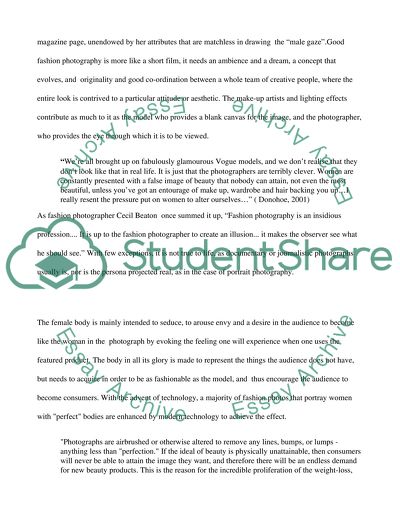Cite this document
(“Women in Fashion Photography Essay Example | Topics and Well Written Essays - 2500 words”, n.d.)
Women in Fashion Photography Essay Example | Topics and Well Written Essays - 2500 words. Retrieved from https://studentshare.org/visual-arts-film-studies/1516050-women-in-fashion-photography
Women in Fashion Photography Essay Example | Topics and Well Written Essays - 2500 words. Retrieved from https://studentshare.org/visual-arts-film-studies/1516050-women-in-fashion-photography
(Women in Fashion Photography Essay Example | Topics and Well Written Essays - 2500 Words)
Women in Fashion Photography Essay Example | Topics and Well Written Essays - 2500 Words. https://studentshare.org/visual-arts-film-studies/1516050-women-in-fashion-photography.
Women in Fashion Photography Essay Example | Topics and Well Written Essays - 2500 Words. https://studentshare.org/visual-arts-film-studies/1516050-women-in-fashion-photography.
“Women in Fashion Photography Essay Example | Topics and Well Written Essays - 2500 Words”, n.d. https://studentshare.org/visual-arts-film-studies/1516050-women-in-fashion-photography.


